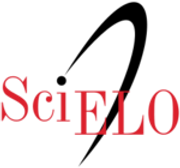Open space and heritage integration strategy in the 2035 Metropolitan Lima-Callao Urban Development Plan
DOI:
https://doi.org/10.21754/devenir.v2i4.276Keywords:
Open spaces, Andean heritage, urban planningAbstract
One major contribution of the Metropolitan Lima Urban Development Plan 2035 (PLAM2035) to the history of planning is its innovative strategy to integrate the city’s open spaces and archaeological heritage within a network of green corridors for the enjoyment of the community. Most of Lima’s architectural heritage is located in the periphery of the metropolis, linked to river valleys and mountains, sites that have been converted into landfills or wastelands threatened by informal urbanisation. However, these places foster the potential to become ecological and cultural assets that help in connecting the metropolitan ecosystems with Andean heritage, to promote the protection of archaeological sites, tourism, national and international research activities, and community integration. This study seeks to analyse the PLAM2035’s proposal regarding the integration between the System of Open Spaces and Ecological Infrastructure and the Heritage and Landscape Network focusing on its context, its new conceptual vision, and its process.
Downloads
References
Alberti, M., Marzluff, J., Shulenberger, E., Bradley, G., Ryan, C., & Zumbrunnen, C. (2003). Integrating humans into ecology: Opportunities and challenges for studying urban ecosystems. BioScience 53 (12), 1169-1179.
Benítez, G., Pérez-Vásquez, A., Nava-Tablada, M., Equihua, M., & Álvarez-Palacios, J. (2012). Urban expansion and the environmental effects of informal settlements on the outskirts of Xalapa city, Veracruz, Mexico. Environment and Urbanization, 24(1), 149-166.
Buck, D. (6 de 12 de 2012). Stepping in the right direction: Giving Mother Earth rights. Recuperado el 27 de 12 de 2014, de Pachamama Alliance: http://www.pachamama.org/blog/stepping-in-the-right-direction-giving-mother-earth-rights
Buenaño, J. C. (2000). Historia y evolución de la ordenación forestal: Una aproximación. Investigaciones Sociales, IV (5), 181-186.
Chipana, J. (2013). Agricultura & minería en una zona ecológica de Lima: Las Lomas de Atocongo (1912-1942). Lima, Perú: Instituto Ichsma.
Cieza de León, P. (1550). La crónica del Perú. Madrid, España: Historia 16.
Cook, N. D. (1981). Demographic collapse: Indian Peru, 1520-1620. New York: Cambridge University Press.
Darwin, C. (2014). A naturalist’s voyage round the world: The voyage of the Beagle. New York: Skyhorse Publishing.
Del Castillo, J. M. (2015). Lima biotopo: Ecosistemas de montaña, patrimonio arqueológico indígena y activismo en los intersticios urbanos de la megalópolis andina. VII Seminario Internacional de Investigación en Urbanismo (p. 99). Montevideo, Uruguay: Universidad de la República de Uruguay-Universidad Politénica de Barcelona.
Elmqvist, T. (2013). Urbanization, biodiversity and ecosystem services: Challenges and opportunities. New York: Springer Open.
Harvey, D. (2000). Spaces of hope. Edinburgh, Scotland: Edinburgh University Press.
Hayakawa, J. (2010). Gestión del patrimonio cultural y centros históricos latinoamericanos: Tendiendo puentes entre el patrimonio y la ciudad. Lima, Perú: ANR.
Hayakawa, J. (2012). Restauro UNI: Breve antología de textos de textos de restauración del patrimonio monumental edificado. Lima, Perú: Universidad Nacional de Ingeniería.
Jorgensen, A., & Tylecote, M. (2007). Ambivalent landscapes—wilderness in the urban interstices. Landscape Research, 32(4), 443-462.
Kaulicke, P. (2008). La economía en el período formativo. En W. Espinoza, L. G. Lumbreras, P. Kaulicke, & J. I. Santillana, Economía Prehispánica, Tomo I (pp. 208-212). Lima, Perú: Banco Central de Reserva del Perú.
Lumbreras, L. G. (2008). Los orígenes de la sociedad andina. En W. Espinoza, L. G. Lumbreras, P. Kaulicke, & J. I. Santillana, Economía Prehispánica, Tomo I (pp. 102-110). Lima, Perú: Banco Central de Reserva del Perú.
Matos Mendieta, R. (1980). Las culturas regionales tempranas. En Historia del Perú, Perú Antiguo, Tomo I (págs. 351-513). Barcelona, España: Juan Mejía Baca.
Municipalidad Metropolitana de Lima. (1992). Plan de Desarrollo Metropolitano de Lima-Callao 1990-2010. Lima, Perú: Municipalidad Metropolitana de Lima.
Municipalidad Metropolitana de Lima. (2014). Plan Metropolitando de Desarrollo Urbano Lima y Callao 2035. Lima, Perú: Municipalidad Metropolitana de Lima.
Pickett, S., Burch Jr., W., Dalton, S., Foresman, T., Grove, J., & Rowntree, R. (1997). A conceptual framework for the study of human ecosystems in urban areas. Urban Ecosystems, 1(4), 185-199.
Riofrío, G., & Cabrera, T. (2010). Expansión urbana y comunidades campesinas: Una entrevista a Erick Romero Mallqui. Quehacer, 179, 58-65.
Sagarin, R., & Pauchard, A. (2012). Observation and Ecology: Broadening the scope of science to understand a complex world. Washington DC: Island Press.
Sandifer, P., Sutton-Grier, A., & Ward, B. (2014). Exploring connections among nature, biodiversity, ecosystem services, and human health and well-being: Opportunities to enhance health and biodiversity conservation. Ecosystem Services, 12, 1-15.
Swyngedouw, E. (2010). Place, nature and the question of scale: Interrogating the production of nature. Berlín, Alemania: Berlin-Brandenburgische Akademie der Wissenschaften.
Ward Thompson, C. (2002). Urban open space in the 21st century. Landscape and Urban Planning, 60(2), 59–72.
Downloads
Published
How to Cite
Issue
Section
License
Articles published by DEVENIR can be shared through the Creative Commons international public license: CC BY 4.0. Permissions beyond this scope can be consulted through the email revistas@uni.edu.pe











